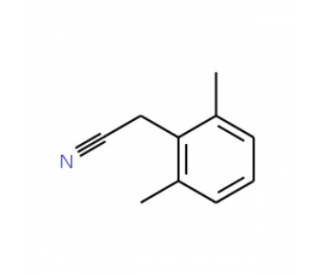详细说明
Species Reactivity
Human
Specificity
Detects human CD23/Fc epsilon RII in direct ELISAs and Western blots.
Source
Monoclonal Mouse IgG1 Clone # 138628
Immunogen
Mouse myeloma cell line NS0-derived recombinant human CD23/Fc epsilon RII
Met150-Ser321
Accession # P06734Formulation
Supplied 0.2 mg/mL in a saline solution containing BSA and Sodium Azide.
Label
Alexa Fluor 488
Applications
Recommended
ConcentrationSample
Flow Cytometry
0.25-1 µg/10 6 cells
Human peripheral blood lymphocytes
Please Note: Optimal dilutions should be determined by each laboratory for each application. are available in the Technical Information section on our website.
Preparation and Storage
Shipping
The product is shipped with polar packs. Upon receipt, store it immediately at the temperature recommended below.
Stability & Storage
Store the unopened product at 2 - 8 °C. Do not use past expiration date.
Background: CD23/Fc epsilon RII
CD23 (also named B cell differentiation antigen) is a member of subgroup II of the C-type (Ca++-dependent) lectin superfamily (1‑5). Human CD23 is a 47 kDa type II transmembrane glycoprotein that is expressed by a wide variety of cell types (6‑10). The full-length receptor is 321 amino acids (aa) in length and contains a 274 aa extracellular region, a 26 aa transmembrane segment, and a 21 aa cytoplasmic domain. The extracellular region contains a C-type lectin domain and a connecting stalk with coiled-coil topography (3, 11). The lectin domain binds both protein and carbohydrate in an apparently Ca++ independent manner (11). The coiled-coil region contributes to oligomerization (11, 12). The lectin domain in human CD23 (aa 162‑284) is 64%, 62% and 68% aa identical to the lectin domains in mouse, rat and bovine CD23, respectively. In the cytoplasmic region, two FC isoforms exist which arise from alternate start sites (6, 12). The “a” (or long) isoform begins with the sequence MEEGQYS and is constitutively expressed by B cells. It is believed to participate in IgE-mediated endocytosis (13). The “b” (or short) isoform begins with MNPPSQ and is induced on a wide variety of cell types by IL-4 (6). Fcb reportedly contributes to IgE-mediated phagocytosis (13). Fcb expressing cells include eosinophils, monocytes, visceral smooth muscle and intestinal epithelium (6, 14, 15). At least four soluble forms of CD23 are known to exist. They range in molecular weight from 25 kDa to 37 kDa, with the 25 kDa form predominating in sera (16). Soluble CD23 (sFc) is generated by metalloprotease (ADAM8; ADAM15; ADAM28) and cysteine-protease activity (16‑18). Cleavage usually occurs between aa 150‑160 (7, 8). It is unclear if sequential metalloprotease-cysteine protease activity is necessary for the generation of all soluble forms. Both soluble and membrane-bound CD23 show bioactivity. Ligands for CD23 include CD21, IgE, CD11b, and CD11c (19‑21). CD23 binding to CD11b and Cd11c on monocytes results in oxidative product generation and proinflammatory cytokine release (21). On B cells, sCD23 induces IgE secretion by binding CD21. Conversely, secreted IgE will, in turn, bind B cell membrane CD23, rendering it unavailable for cleavage, and thus shutting down IgE production (11).
References:
Kijimoto-Ochiai, S. (2002) Cell. Mol. Life Sci. 59:648.
Heyman, B. (2000) Annu. Rev. Immunol. 18:709.
Bajorath, J. and A. Aruffo (1996) Protein Sci. 5:240.
Drickamer, K. (1993) Curr. Opin. Struct. Biol. 3:393.
Drickamer, K. (1999) Curr. Opin. Struct. Biol. 9:585.
Yokota, A. et al. (1988) Cell 55:611.
Ludin, C. et al. (1987) EMBO J. 6:109.
Ikuta, K. et al. (1987) Proc. Natl. Acad. Sci. USA 84:819.
Kikutani, H. et al. (1986) Cell 47:657.
Letellier, M. et al. (1988) J. Immunol. 141:2374.
Hibbert, R.G. et al. (2005) J. Exp. Med. 202:751.
Beavuil, A.J. et al. (1992) Proc. Natl. Acad. Sci. USA 89:753.
Yokota, A. et al. (1992) Proc. Natl. Acad. Sci. USA 89:5030.
Belleau, J.T. et al. (2005) Clin. Mol. Allergy 3:6.
Tu, Y. et al. (2005) Gastroenterology 129:928.
Marolewski, A.E. et al. (1998) Biochem. J. 333:573.
Fourie, A.M. et al. (2003) J. Biol. Chem. 278:30469.
Karagiannis, S.N. et al. (2001) Immunology 103:319.
Aubry, J-P. et al. (1992) Nature 358:505.
Sarfati, M. and G. Delespeese (1988) J. Immunol. 141:2195.
Lecoanet-Henchoz, S. et al. (1995) Immunity 3:119.
Long Name:
Fc epsilon Receptor II
Entrez Gene IDs:
2208 (Human); 14128 (Mouse); 171075 (Rat)
Alternate Names:
BLAST-2; CD23; CD23A; CD23CD23 antigen; CLEC4J; CLEC4JC-type lectin domain family 4 member J; C-type lectin domain family 4, member J; Fc epsilon RII; Fc fragment of IgE, low affinity II, receptor for (CD23); FCE2Fc fragment of IgE, low affinity II, receptor for (CD23A); fc-epsilon-RII; FCER2; Fcer2a; FceRII; IGEBF; Immunoglobulin E-binding factor; low affinity immunoglobulin epsilon Fc receptor; Ly-42; Lymphocyte IgE receptor











 粤公网安备44196802000105号
粤公网安备44196802000105号